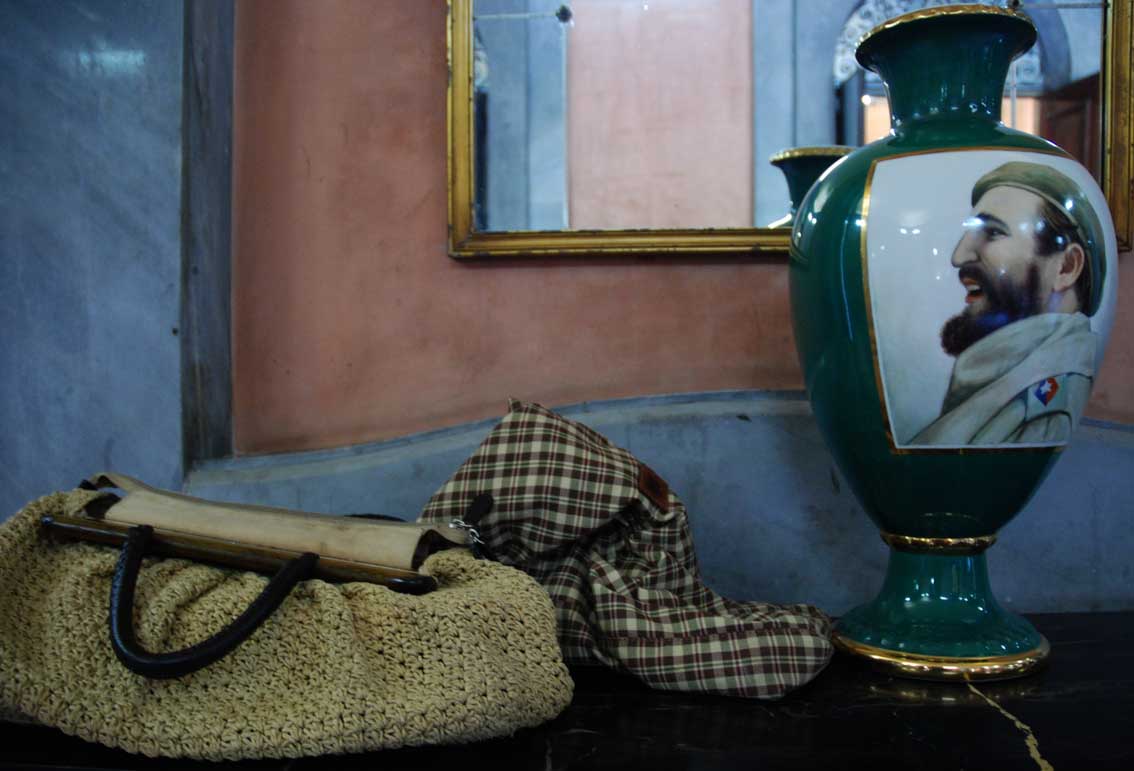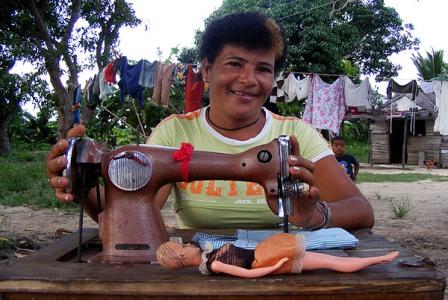Self-Employment & Private Capitalism: Not the Same Thing
Pedro Campos

HAVANA TIMES, Oct. 20 — The expression “self-employed workers who hire workers” is a negation in itself. “Self-employed” doesn’t begin with the word “self” by mere chance; it is work carried out by oneself, for the sustenance of oneself and one’s family. It does not involve the exploitation of other people’s wage labor, as a norm, and nor does it entail working for someone else.
Self-employment is an individual form of economics. It is a form of self-management that has always existed in all socioeconomic formations since the decomposition of the primitive communal system, which had small farmers, artisans, vendors and free providers of services as its clearest expressions.
Marx referred to self-employed work as “simple commodity production” because it could not be expanded beyond its own reproduction since it did not involve the exploitation of other people’s labor (it involved no salaried labor from which surplus value was appropriated).
When in their workshops “master craftsmen” had “apprentices” to whom they taught their arts, and these individuals began to produce in guilds for those grandmasters, there appeared the first historical forms of organized capitalism (though paid labor dates back to ancient times, back to slave-based Rome itself, where the terms “salary” and “proletarian” had already been used.)
The person who systematically hires wage labor becomes the exploiter of other people’s labor under private capitalism.
If these concepts are not clearly grasped, one can confuse self-employed workers with the petty bourgeoisie; or simple commodity production with expanded commodity production or with private capitalism. These other forms of production are for profit in the marketplace, not for the satisfaction of the specific needs of producers and society.
The petty bourgeoisie is a stratum of the bourgeois class, only on a smaller scale given its lesser amount of capital and the fewer number of wage-laborers they exploit.
When Lenin pointed out that the petty bourgeoisie always engendered capitalism, he was referring to those who exploited other people’s labor on a small scale; those who through the exploitation of their wage-laborers constantly expand their production, their capital and their means of production: everything that comes from surplus value (the surplus labor that those wage workers created and contributed, and that was appropriated by the petty bourgeois owner).
The relationship between ownership and the means of production
What determines the membership in a social class is not whether one lives better or worse, or whether they possess these or those personal goods, but the relationship between ownership and the means of production. Class position has to do with the way those means are exploited; how one’s sustenance is obtained (if it’s through one’s own work, through working for others or through the work of others). It has to do with who becomes enriched (who appropriates the profit) from the wage labor of others – be it through private property, public property or a state functioning like a capitalist.
In Cuban society in the first half of the 20th century, among the self-employed workers (who were included among almost all professions and occupations) were many who were part of the so-called middle classes: people who lived in neither poverty nor opulence. However, nor were these self-employed workers petty bourgeois, since they didn’t exploit other workers.

Some say that professionals who worked for themselves exploited through prices, though this overlooks the fact that those prices were (and are) determined by the market and by the value of the labor power used by those professionals to create their products or offer their service.
Among self-employed workers in Cuba there have always been people who never hired wage-laborers (or did so only occasionally), never ended up accruing capital to exploit and/or were never interested in obtaining this, as they lived decorously. They were not capitalist because they didn’t exploit anyone. We found this to be the case with many doctors, dentists, salespeople, teachers and other professionals who worked for themselves and who didn’t work for others or for the State. Some had some assistants, domestic employees, or aids or drivers who often served the family, but they were often integrated into these families or were dealt with like other family members; therefore, they could not always be considered as exploited, based on the treatment and benefits they received.
But there were also self-employed workers who were able to form small businesses in which they gave jobs to a few wage earners. The owners were allowed to “expand” their profits thanks to these hired workers, the owners’ “good noses for business” and the investments they made. These owners were the people who rose from self-employment to the stratum of the petty bourgeoisie.
Among self-employed workers, a large portion was able to achieve viability, but many others weren’t. They conducted their self-employed work while also working in jobs for other people or for the State; or they also became involved in some form of criminal activity. That’s why they oscillated between the working class, the self-employed, criminal elements and the lumpenproletariat.
Many self-employed workers (ones who never had a license, a fixed business address, or a small amount of capital and who lived only from their “informal” work) were not organized into any private company, cooperative or under the State. They lived in a “subsistence economy” and were the relatively suffering majority: the fuel of social revolution.
For the sake of clarity, I should specify that the petty bourgeoisie is a member of those owners of the means of production who systematically exploit other people’s labor, although they often work alongside their workers. More than a few of these small private businesses, which historically have relied on a minimum number of workers in their practical operation, have functioned more like families or a cooperative businesses —sharing ownership, administration and profit— than like a capitalist business. This explains the ambivalent behavior of many petty bourgeois and the confusion among some comrades regarding self-employment.
The true self-employed workers
Looking at them from any angle, the owners of the means of production are capitalists, be these means substantial or small, of high or low technology, involving the stable or infrequent exploitation of wage labor, or having few or many workers. The size of their assets and the greater or fewer number of workers they exploit are what characterize them as petty, medium or the big bourgeoisie.

Private producers who do not exploit other people’s labor, who do not hire wage laborers or who turn to this form only occasionally, cannot be considered part of the petty bourgeoisie. They are the true self-employed workers. Neither economically nor socially do they have anything to do with that stratum of the bourgeoisie, and they are —truly— workers who work in a self-managed manner (most of the time with the participation of family members, where the descendants learn the occupation and many of them also wind up becoming independent workers).
Generally self-employed work is realized in occupations that, for different reasons, demand individualized or specialized labor that requires certain dexterities that, so far, still cannot be performed by machines or that owing to their characteristics can be carried out without requiring any other type of direct cooperation from other workers.
The modern computer technology is vastly expanding self-employed work because it facilitates many people offering their services and providing their knowledge in a free uncompelled manner. They themselves are able to determine the price of their labor power, and —though they are always competing in a market— they are not subordinated to specific capitalists who exploit their labor.
The predominant dogmatic interpretation of the centralized “workers” State in Cuba (which was very similar to Russia’s in the early decades of the 20th century, what Marxist political economy termed “real socialism”) prevented the identification of all those differences and impeded the advance to new properly socialist forms of production. This interpretation conceived of a new society characterized by a paternalist state benefactor and administered by a centralized party that was in charge of exploiting the “working class” in a wage-labor system. This is why Cuban wage workers could never become the new revolutionary class of freely associated workers who would be called on to carry out socialist transformations in all senses.
A form of concealing exploitation
To put venders, service providers, artisans, professionals and other types of self-employed workers into the same sack as private owners of the means of production (who usually exploit wage labor), can only serve to hide the exploitation to which these owners subject their workers, the private capitalism that is promoted with this form of work.

Truly, “self-employed work that hires workers” is making an opening for private capitalism. They should publicly recognize that they are providing an opening for private capitalist companies, in violation of the socialist constitution, and they should make a law that sets limits. These forms of controlled capitalism, without much weight in the overall economy, are not at odds with Marxist socialism in the period of transition.
The left extremists are those who never tolerated such forms of controlled capitalism and who eliminated them in 1968, like in the 1962 when they disabled the cooperative system of sugar cane production at the very moment when our leading industry was referred to by Fidel as the “backbone of the Revolution” and the veritable nest of the future of socialism in Cuba.
The low wages of “statist socialism” and its consequent low productivity —not the other way around— will inevitably lead to the supremacy of the most efficient private capitalism (which pays its labor force better), and to growing privatization if the State economy does not undergo a socialization process – as some of us have now been arguing for over the past 20 years.
Extremists of both sides want to see the ideas of self-management/cooperativist socialism advocated by Marx and Lenin burned in the blaze of the statist disaster. They want to see them pitted against what remains of the 1959 revolution. But NO, the ideas of a more participative and democratic socialism aim to rescue the best of that tradition and, based on them, give continuity to socialist theory and practice.
We will not tire of preaching, because other roads have nothing to do with socialist goals. History teaches us that the production methods of private capitalism were imposed on feudal ones since they were more efficient. State capitalism, by its very nature (as amply explained in other articles) will never achieve greater efficiencies than private capitalism.
Socialism will prevail because freely associated forms of production, if they are allowed to develop and are completely free, will be more efficient in all senses (economic, human, ecological), and not because of some wish to impose them arbitrarily.
Consequently, to give private wage-labor companies the first opportunity, as an escape route backwards from the statist debacle, without at least attempting the cooperative company in industry and services, and with agricultural cooperatives handcuffed by an infinite variety of regulations, and without at least mentioning workers’ control, self-management or co-management, all of this is like opening a door to private capitalism and closing it on socialism.
Many comrades have not come to understand that in essence a new socialist socio-economic system bears a new form of organizing production; it is a new way of performing work. It is distinct from wage labor under capitalism; it doesn’t depend on distribution or on the state control of property, the market or prices. Yet nor does it involve arbitrary monetarists maneuvers that are imposed in search of macroeconomic balances, if not precisely the other way around. All of this depends on the production relations. Please, read Marx and try to interpret his words wisely.
State-owned property controlled by a bureaucracy that exploits wage labor is a capitalist form of the state, though its general “aims” are to spread well-being and wealth obtained along that path. It functions like the capitalist welfare state that many social democrats defend, since it seeks an equitable distribution based on the taxes that are collected at the expense of both capitalists and workers. How long will they continue confusing statism with socialism?
To be socialist and to have true social content, a state property must meet two basic conditions: 1 – it must be operated in a way different from that based on wage labor; it must involve direct control by its workers through a co-managed form involving them and the State, with the workers somehow participating in ownership or usufruct, and where the workers democratically choose their leadership as well as negotiate the production and distribution of their profits and; 2 – state property must serve the general interests of the nation and the people, which would be demonstrated in its social contributions to the participative budgets of the municipalities and the nation, as well as in complying with regulations regarding public health, ecology, labor and all concerns established by the local governments and national legislature.

You are of course right about many things in this article, Pedro. In the last paragraph you correctly identify that the workers need to “somehow participate” in owning the means of production. With such ownership democratic control and self-management of the workplace would flow naturally. This would greatly increase productivity and increase thereby the prosperity of the Cuban people.
I think you make a theoretical error however by calling Cuba “state capitalist,” based on the fact that she engages in the system of wage labor. Cuba is still socialist, as long as a socialist political party has state power in its hands.
State power determines the dynamic, or potential dynamic of socialist construction, and the bridge-building project of socialist construction is all about dynamics.
But socialist Cuba has an incorrect form of socialism, an incorrect architectural plan for the socialist bridge project. She could easily make a shift to a correct form however because state power still rests with a party that hopes to represent the working people and build a new society.
The key to reform in Cuba is throwing out the quasi-religious program of state monopoly socialism–which you understandably mistake for state capitalism–and bringing in a new formula of “partial” state ownership of the instruments of production, using the Mondragon cooperatives as an economic bluelprint.
Thanks, Pedro, for a great article.